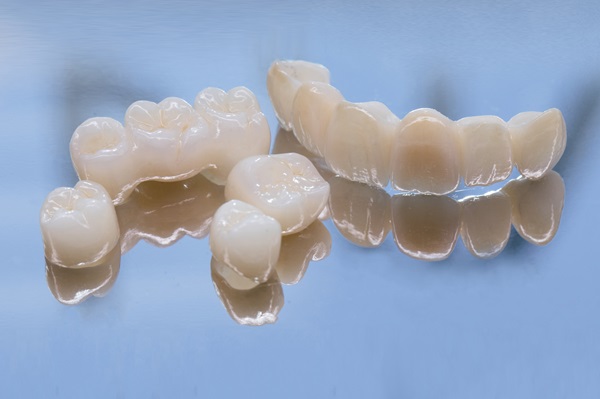What Is a Dental Bridge?

Along with other treatments, a dental bridge is a common way to improve a smile and help you feel better about your appearance. This procedure can replace missing teeth and close embarrassing gaps in your mouth. If you undergo this process, you can have less anxiety in social situations and want to open your mouth more. Our dentist has the knowledge and training to provide effective treatment. Before you get a dental bridge, it is important to understand how this process works and whether it is right for your oral health.
Brief overview
When a person thinks of a bridge, they may think of a pathway over water or a gorge, allowing people to cross over without being in danger. This walkway connects two points over a space. The dental version works similarly, only in a person's mouth. This treatment bridges the distance between natural teeth using two or more crowns on either side of the gap of teeth. It uses existing teeth — abutment teeth — as an anchor for false teeth when a patient has lost them or when a dentist has to pull them out. Durable artificial teeth are usually made of porcelain, though some dentists use gold, alloys, or a combination of two or more materials.
Who needs a bridge?
This intervention is helpful for patients who have one or more missing teeth. This treatment can be a smart option if the person does not want implants or partial dentures. Some patients lose teeth due to poor oral habits, such as a lack of brushing or flossing. Extraction may be the only course when tooth decay is so severe that the dentist cannot salvage the tooth. Also, hard blows can knock out teeth. People who play sports or who suffer an accident commonly lose their teeth this way.
Types of dental bridges
There are three main types of dental bridges: traditional, cantilever, and Maryland-bonded bridges.
- Traditional bridges: Traditional bridges are made of porcelain or ceramic material fused with metal. The general dentist makes a crown for the tooth on either side of the missing tooth. This is the most common type of bridge
- Cantilever bridges: These bridges are used on one adjacent side of the missing tooth or teeth. Cantilever bridges are not common, and dentists do not recommend placing them in the back of the patient's mouth. By doing so, they can put too much pressure on other teeth and cause further damage
- Maryland bonded bridges: Maryland bonded bridges, also known as resin-bonded bridges, are made of porcelain, porcelain fused to metal, or plastic teeth and gums supported by a metal or porcelain frame. Metal or porcelain wings are usually placed on only one side of the bridge bonded to the patient's existing teeth or implants
There is a fourth type of dental bridge known as an implant-supported bridge. These bridges are similar to traditional bridges, but instead of being cemented to teeth, they are held in place by implants. Nevertheless, the type of dental bridge a patient receives depends on their overall oral health and their individual needs to fi a gap between their teeth.
The process
The dentist will begin by examining the mouth and taking X-rays. Crowns will go over the existing teeth, so the dentist will first shave down the teeth so the cap will fit. After cementing the cap, the dentist will take an impression so a lab technician can construct the false teeth. Next, the patient will get a temporary item until the permanent one is available. The dentist will check the temporary bridge at the next appointment to ensure it fits properly. The dentist will remove the temporary device if everything looks and feels right. The dentist will then fix the permanent one in place and make the required adjustments to make the patient comfortable.
Benefits of a bridge
This apparatus allows the patient to speak and eat normally once again. Bridges also restore a patient's smile and improve their self-confidence. The device helps correctly distribute bite force and maintains the shape of the person's face. A bridge can keep natural teeth in the right position. The bridge can be effective for up to 15 years with proper maintenance.
Make an appointment
Our dentist strives to improve patients' smiles and help them feel more at ease in public and in daily life. Consider the advantages of this treatment and the benefits it can provide. It would be best if you did not have to live with missing teeth anymore. Call our office today to make an appointment to discuss your desire to repair your dental issues.
Request an appointment here: https://www.islandparadisedental.com or call Island Paradise Dental at (239) 465-4999 for an appointment in our Marco Island office.
Check out what others are saying about our dental services on Yelp: Dental Bridges in Marco Island, FL.
Related Posts
A dental crown protects a damaged tooth and restores shape, strength, and appearance. Crowns cover the entire visible portion, shielding cracks, large fillings, and worn enamel while improving function. Dentists use crowns to rebuild biting surfaces, anchor bridges, and finish implants. This guide explains when crowns are a suitable option, material choices, treatment steps, costs,…
A dental crown restoration involves two dental visits. Dentists use this type of restoration to repair a range of tooth damage types, including decay, chips, cracks, and teeth worn down by continuous grinding. This guide discusses what you can expect during a dental crown restoration and how a dentist can help ensure a safe and…
Anyone who has had dental crowns understands how beneficial they can be. Crowns are highly durable and work to improve the look of teeth, restoring a person's smile. A crown is often used to prevent a damaged tooth from deteriorating further. Others may need a crown to complete a bridge or implant treatment. A dental…
Loose teeth can be caused by trauma to the mouth, tooth decay, or periodontal disease. The type of treatment a same day dentist can provide depends on the cause of the problem.Patients are advised to seek help for loose teeth within 12 to 24 hours of noticing the issue. The earlier treatment is provided, the…












